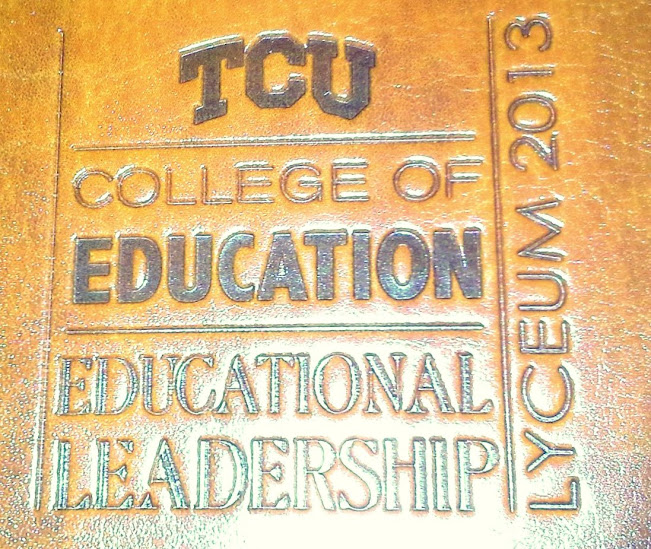TCU Lyceum 2013
/
Last week I had the opportunity to speak about educational technology to a group of 26 principals from around the state. When I say a "group of principals," what I really mean is "some of the very best principals" in the state. All of the superintendents in the state were contacted and asked to recommend their highest performing principals for the TCU Educational Leadership Lyceum 2013, and these principals were among those recommended and accepted. To say I was intimidated would be a huge understatement. I have taught classes to large groups of people virtually everyday for nearly 10 years, so it would stand to reason that I was up for this task. The truth is, I analyzed, planned, re-analyzed, over-planned, and perseverated over this presentation for weeks.
I will be the first to admit my presentation was kind of all over the place. I started with something about the past and future of educational technology ("Let's start by talking about the invention of fire ..."), then I mentioned something about the myths and actual findings of ed. tech. research, and I ended by showing them a few tools/activities that I like to use in my classes. Since this was my first presentation like this, I made the common rookie mistake of trying to do too much within such a short time frame. The presentation was scheduled for 3 hours, which seemed like a lot of time, but once I got the participants involved in some activities, it flew by. As usual, I left the presentation with a pretty good idea for what went well and what I would do differently if I were to get this opportunity again.
Here are my main lessons from this experience:
- Less is more. People can only remember a certain amount of information, and they are probably more likely to remember a handful of compelling activities than a bunch of information.
- There are no style points. Actually there could be, but if they distract from the One of the main mistakes I made was trying to switch between too many programs. I was projecting my main points using the Broadcast feature in SlideShark. I was mirroring the display of my iPad using AirServer when I wanted to demonstrate something. I was pulling information from several different browser tabs. It got confusing for me, which means it was definitely overload for the participants.
- Use activities to illustrate a point rather than making them the point. I knew this as I planned the presentation, and I still gravitated to this error like a moth to a porch light. I usually like to arrange a presentation around 3-4 big ideas, and I have activities that make them come to life. This time, I did that for 2 out of 4 of my main points, so it should come as no surprise that only half of my main points went over well. Anyone who has done this sort of thing for awhile knows you can't just show people tools. One fourth of the audience is two steps ahead and bored, one fourth is with you, and half of them are totally lost. I had to re-learn this lesson the hard way.
Overall, I feel very fortunate to have been included on the program for this amazing group of principals. Their energy and love for students was evident in just the brief time I was with them. They asked great questions and willingly participated in the activities I had set up for them. Many of them followed along and took notes on their personal devices, which I believe increases the probability some of these ideas will live on beyond the short workshop. I am also thankful for my colleagues at TCU who invited me to be part of their team. I look forward to many more excellent experiences in the future.

